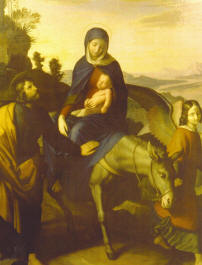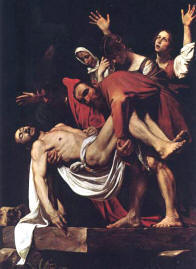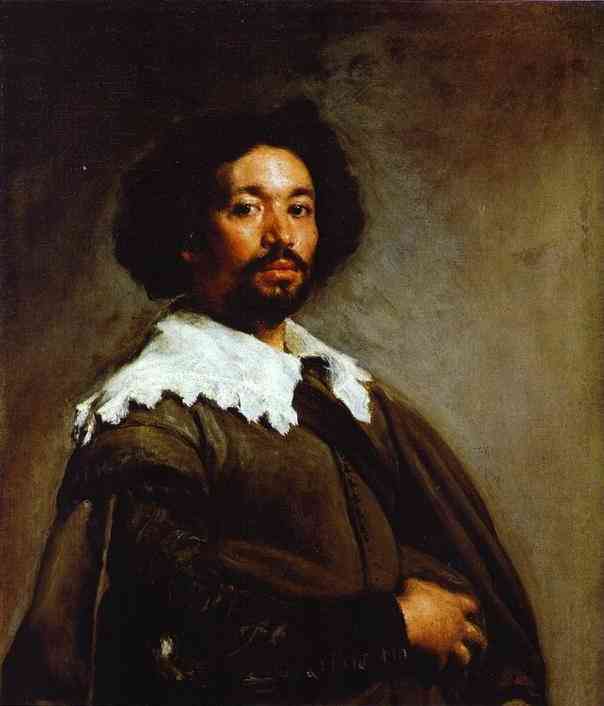|
(Back to Honors Home Page)
HoNoRS
4963 / 5963 An Age of Sensuality and Inquiry:
The
Baroque
in
Literature,
Visual
Art,
and
Music
The
major baroque literary works from the English, Spanish, and Italian
traditions will be studied; in addition, we will discuss music and analyze
slides and prints of paintings and architecture from seventeenth-century
Europe. This course, as an interdisciplinary approach to the baroque tradition, will provide students with alternative ways of seeing and appreciating the literature, art, and some music of the Seventeenth Century, a period of tremendous tension and sense of impending apocalypse. The student learns that the greatest aesthetic expressions of optimism, spirituality, and potentiality of humankind most often occur in times of crisis. Such was the baroque, a period that saw the Thirty-Years War, Counter-Reformation, and English Civil War. The age was filled with great intellectual ferment as well, with perceived threats to religion posed by the scientific inquiry of Copernicus, Keppler, and Newton, and Descartes' philosophic methodology. A student of the humanities sees that techniques of artistry are often based upon similar impulses, which give rise to similar, though variously articulated, mediums of artistic eloquence.
As an upper-division course, this class will synthesize different disciplines within the humanities, drawing upon, principally, the literature and visual art of the baroque period, but relying upon music, history, philosophy, and science, as well. By means of different perspectives, this course will offer an overall appreciation for comparable works of artistic expression.
Week One:
Introduction to course, including historical background, scientific ferment,
qualities of
Week Two:
Criticism of the concept of the baroque: can it be defined, or only known by
a sum of its
Week Four:
Donne concluded: Thematic and metaphorical link
Week Five:
Shakespeare's Antony and Cleopatra (theatrum mundi, tedium
vitae, female
Week Six:
Shakespeare's Antony and Cleopatra concluded, begin Hamlet
(Shakespeare as
Week Seven:
Shakespeare's Hamlet concluded.
[Note:
Corneille's El Cid may be substituted on the syllabus for one of the
Shakespeare plays]
Week Eight:
The Spiritual and Physical: poetry of Herbert and Marvell (among the works
to be studied: Marvell's "The Nymph
Poetry
of Crashaw and Vaughan: religious poetry and ecstasy (among the works to be
studied: Crashaw's "The Weeper," "The
Week Nine:
Introduction to Milton: fusion of classical and religious, felix culpa,
irony, metaphysical imagery (work: Paradise Lost, bk.
Week Ten:
Milton continued: Satan as hero: the romantic view, Christ as epic hero, the
poem as drama (bks. 2-12).
Week
Eleven: The
Spanish Baroque (Inquisition, illusory nature of physical reality: theatrum
mundi, religious and mystical literature,
Week Thirteen:
Art of Velazquez; Art of Italian Baroque: Caravaggio, Bernini,
Week
Fourteen:
Italian baroque cont. The music of Vivaldi, and the "belatedness" of
Course
Requirements
Besides
reading the primary materials, an analytical paper will be required on one
of the works discussed in the course as it pertains to the concept of the
"baroque" (explicate a poem or compare a poem to a painting, for example;
papers will become an integral part of the class, with early drafts
circulated in class in order to encourage and to facilitate the
interdisciplinary approach to the course. Students will also be asked
individually to make an oral presentation on a work not covered in the
syllabus, a painting, poem, or drama that typifies the qualities of the
baroque. As well, group projects will be required that merge students'
efforts, where students share
Required
Reading
Calderon
de la Barca's Life is a Dream. Barron's Educational Series.
Pierre
Corneille's El Cid. Penguin.
John
Donne: The Complete English Poems. Penguin.
The
poetry of Crashaw, Herbert, Marvell, and Vaughan (to be photocopied by
instructor, or available
John
Milton's Paradise Lost. Mentor.
Shakespeare's Antony and Cleopatra and Hamlet, Signet edition.
The
poetry of St. John of the Cross and St. Theresa (to be photocopied by
Heinrich
Wolfflin's essay on the baroque (to be photocopied by instructor)
Slides
and prints to be supplied by instructor
Additional material for reports, papers, etc.: Rene Wellek, "The Concept of
the Baroque," the poets Fray
|
|
|

 C
C


